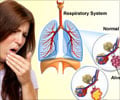
"Mirabegron is a first in class therapeutic agent with a mechanism of action distinct from that of antimuscarinic agents," says urologist Victor W. Nitti, MD, of the NYU Langone Medical Center. "While antimuscarinic agents are the current pharmacological mainstay for OAB, some patients have a suboptimal response or experience side effects such as dry mouth or constipation. The result is that a high proportion of patients on antimuscarinic drugs discontinue therapy, with only 25% remaining on therapy at one year. We need an alternative therapy for some of these patients."
This randomized, parallel group, double-blind phase III study comprising 1329 patients was conducted at 132 sites in the U.S. and Canada. Those eligible for the study voided 8 or more times daily and experienced 3 or more urgency episodes with or without incontinence over a 3-day period. After 2 weeks of receiving placebo, 454 patients were randomized to continue to receive placebo, 442 were given 50 mg mirabegron and 433 received 100 mg mirabegron daily for 12 weeks.
Compared to the placebo group, both mirabegron treatment groups showed statistically significant (p <0.05) reductions from baseline to final visit in the mean number of incontinence episodes and micturitions per 24 hours. Interestingly, the voided volume per micturition more than doubled, from an average of 7.0 ml/micturition to about 18 ml/micturition in the mirabegron groups. This finding supports the hypothesis that unlike antimuscarinic drugs, β3-adrenergic agonists work by promoting urine storage and increasing bladder capacity, according to the authors.
Urgency and nocturia were reduced in those treated with mirabegron compared to placebo. Significant improvements were seen in quality of life measures, and the magnitude of the treatment response was similar to that seen with other OAB agents.
The frequency of dry mouth was low and similar in all groups. Two percent or fewer of each group reported constipation. No significant differences were noted among the groups for any other treatment-emergent adverse event, including acute urinary retention, cardiac arrhythmia, or hypertension, and there were no significant hematologic or serum chemistry abnormalities.
Advertisement
Advertisement








